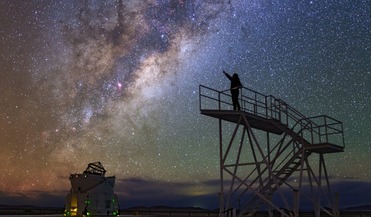 27 February 2019
Goonhilly partners with the Australian Space Agency to drive new opportunities worldwide
27 February 2019
Goonhilly partners with the Australian Space Agency to drive new opportunities worldwide
..., navigation and monitoring capability across Australia and to maximise the country’s resources by solving major satellite system and advanced communications challenges. Another is Goonhilly’s commitment to help develop Australian-based deep space...
 03 June 2019
CEN and CENELEC to hold workshop on standards in space applications
03 June 2019
CEN and CENELEC to hold workshop on standards in space applications
... around strategic issues, such as the Space Strategy for Europe; the applications from the global navigation satellite system Galileo and EGNOS for road, rail, air and maritime transport; Copernicus for earth observation; the...
 16 January 2020
World premier: first plant-powered IoT sensor sends signal to space
16 January 2020
World premier: first plant-powered IoT sensor sends signal to space
... option for powering sensors.” Lacuna, based in the UK and the Netherlands, is launching a Low Earth Orbit (LEO) satellite system that will provide a global Internet-of-Things service. The service allows collecting data from sensors even...
 05 March 2020
50th Anniversary of Black Arrow's first successful rocket launch
05 March 2020
50th Anniversary of Black Arrow's first successful rocket launch
... of space in the UK.” Richard Gardner, chairman of FAST, said: “This significant addition to our own display of space satellites, systems and innovations that all came from the former RAE at Farnborough, should attract much interest, especially ...
 July 2014
Achilles’ heel
July 2014
Achilles’ heel
... the economy. So which services have become parts of national infrastructure? The global navigation satellite system (GNSS) is an obvious example. Satellite networks provide the ability to allow instant credit card authorisation and automated banking...
 October 2015
Copernicus, ESA’s most ambitious Earth Observation programme
October 2015
Copernicus, ESA’s most ambitious Earth Observation programme
...- and night-time hours, as well as under cloudy conditions. The follow-on EUMETSAT Polar System is now under way to replace the current satellite system in the 2020 timeframe and to contribute to the IJPS. Started in 2005 under the name...